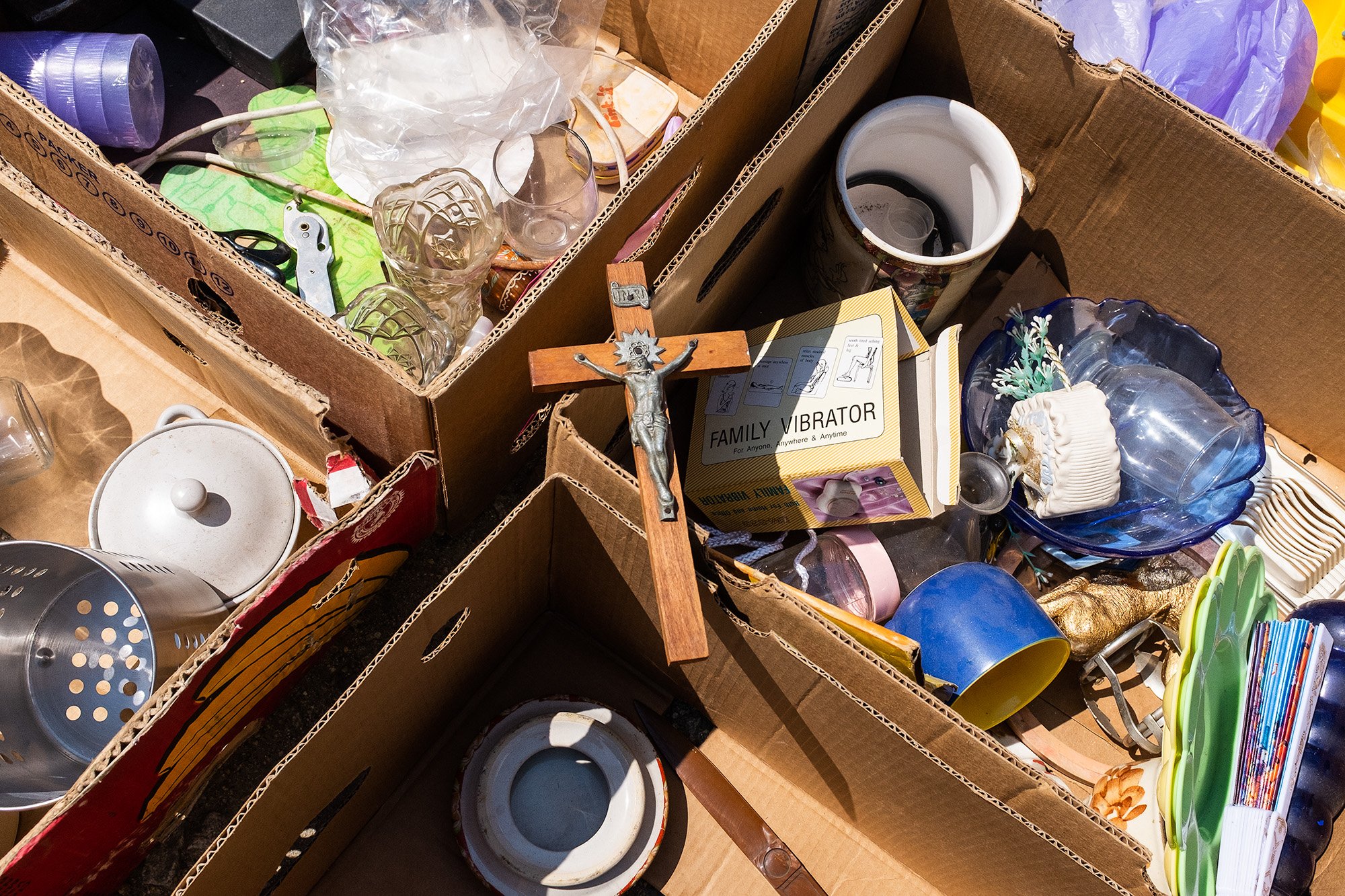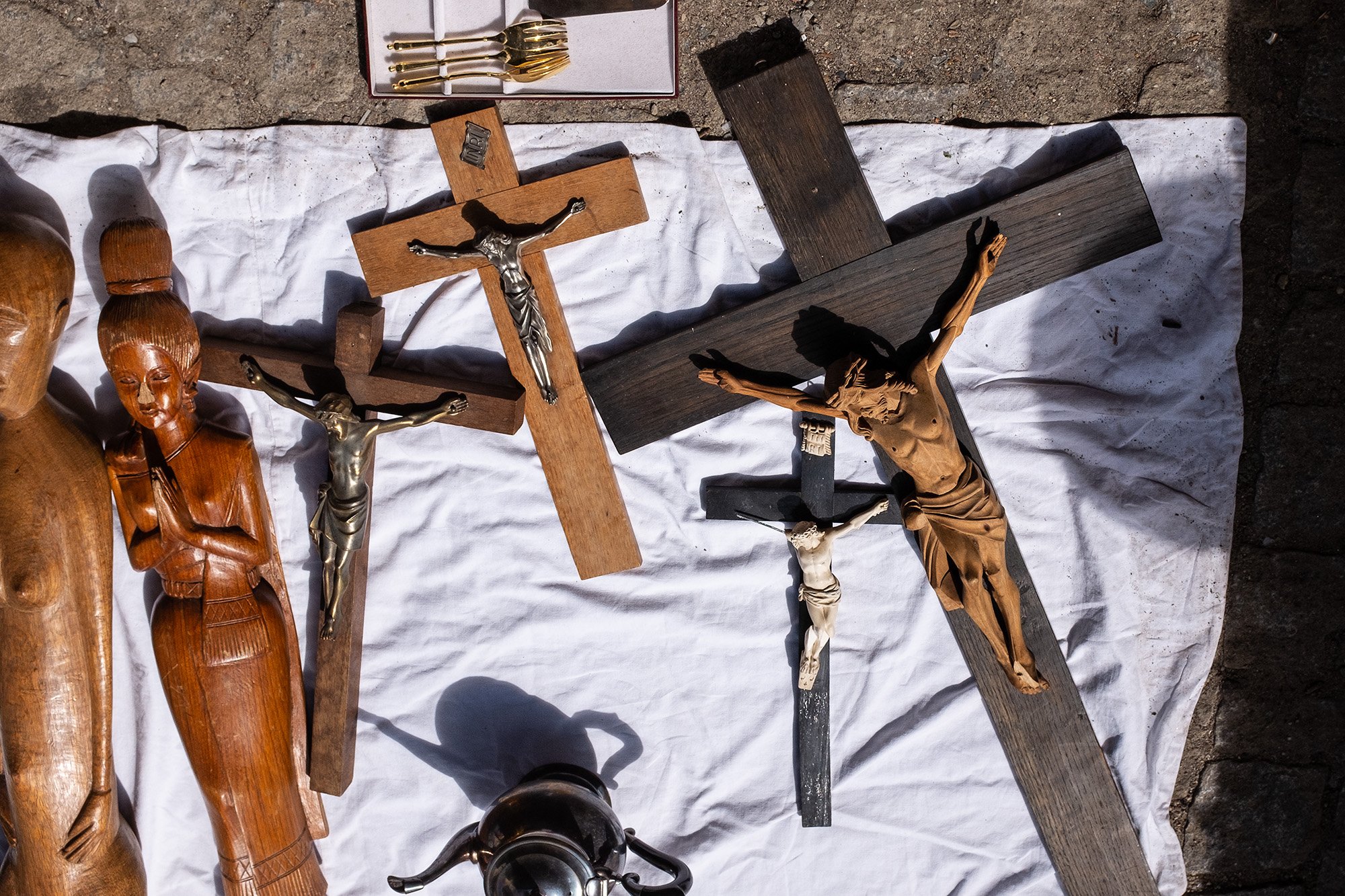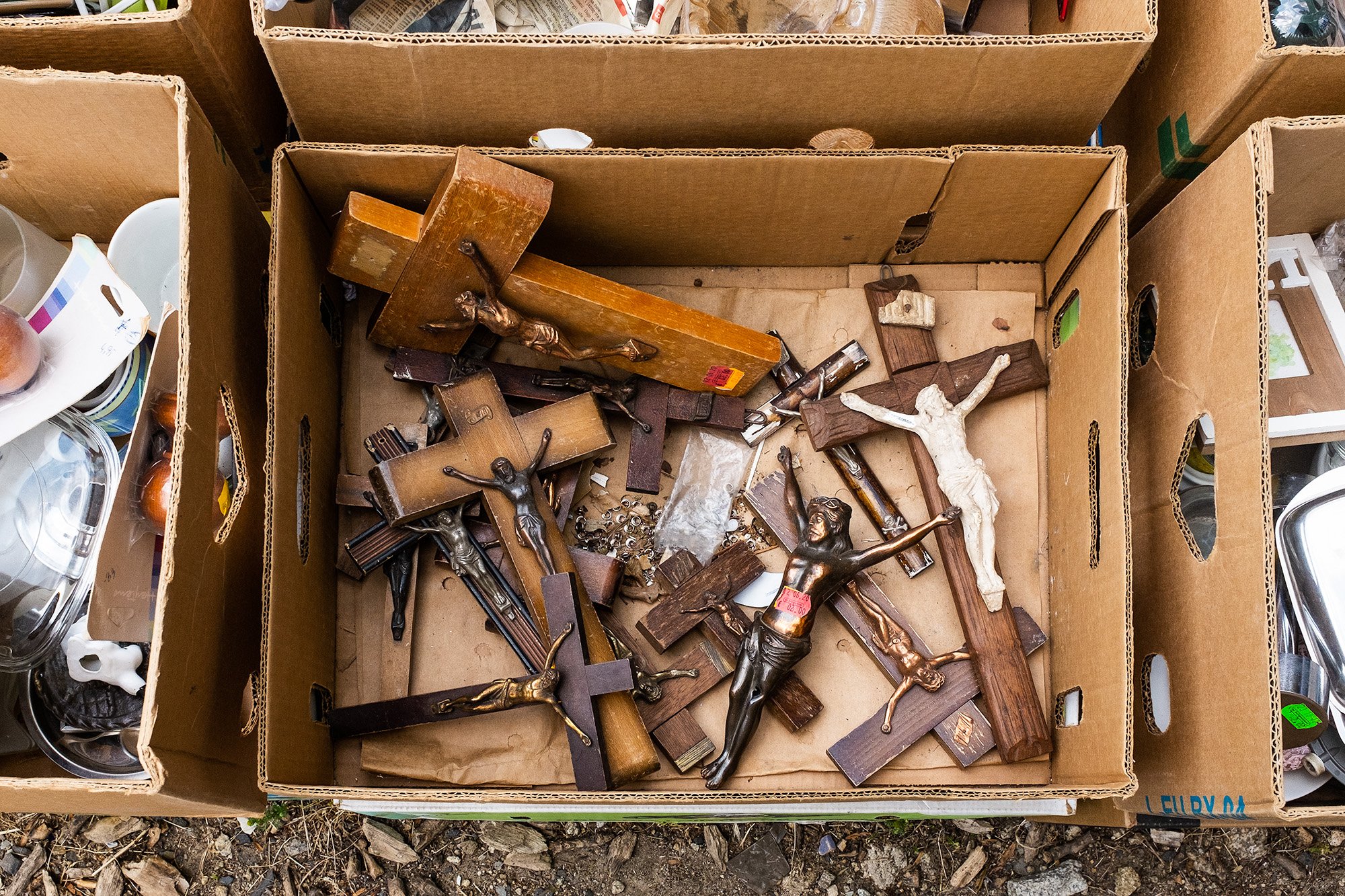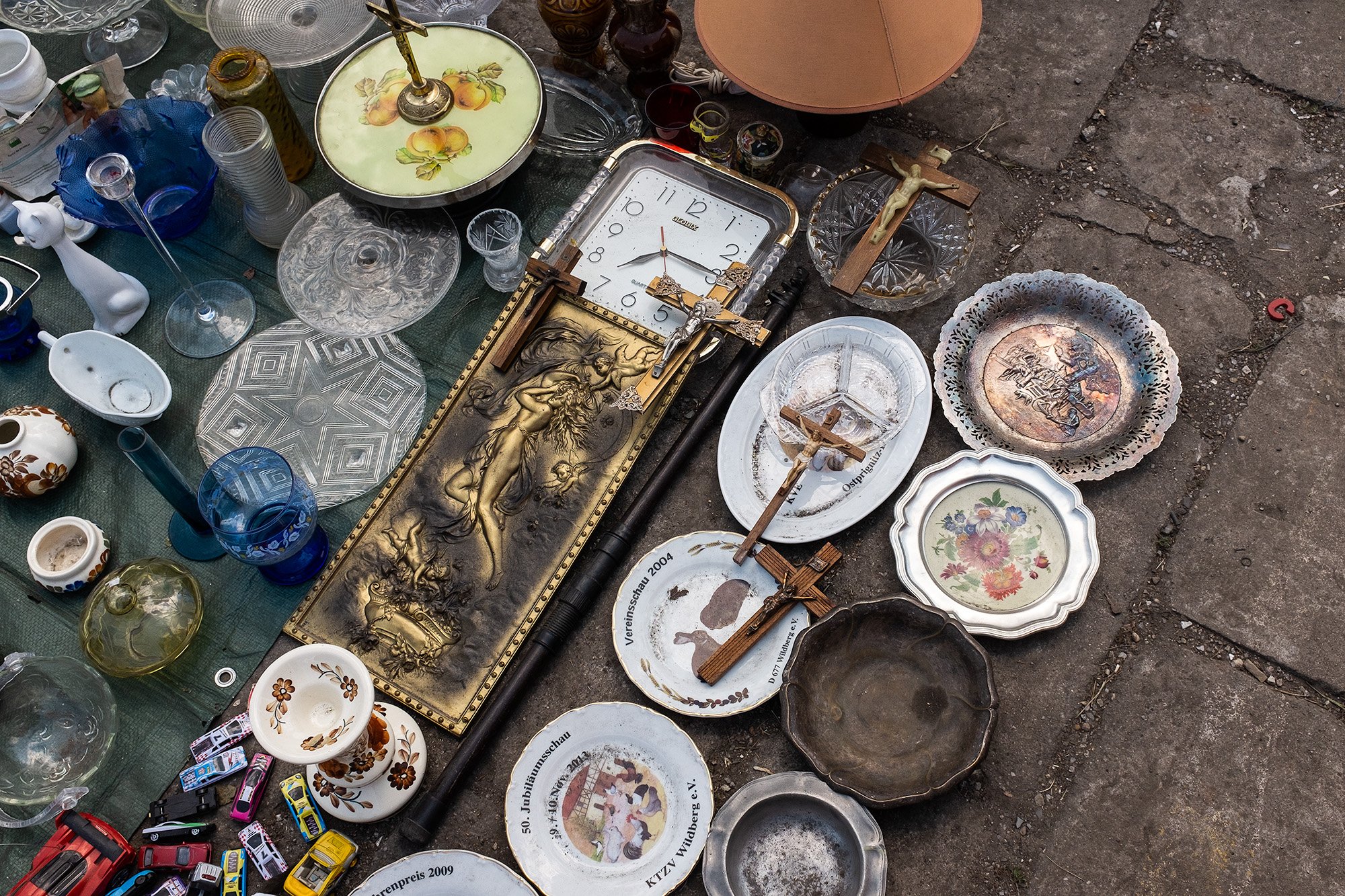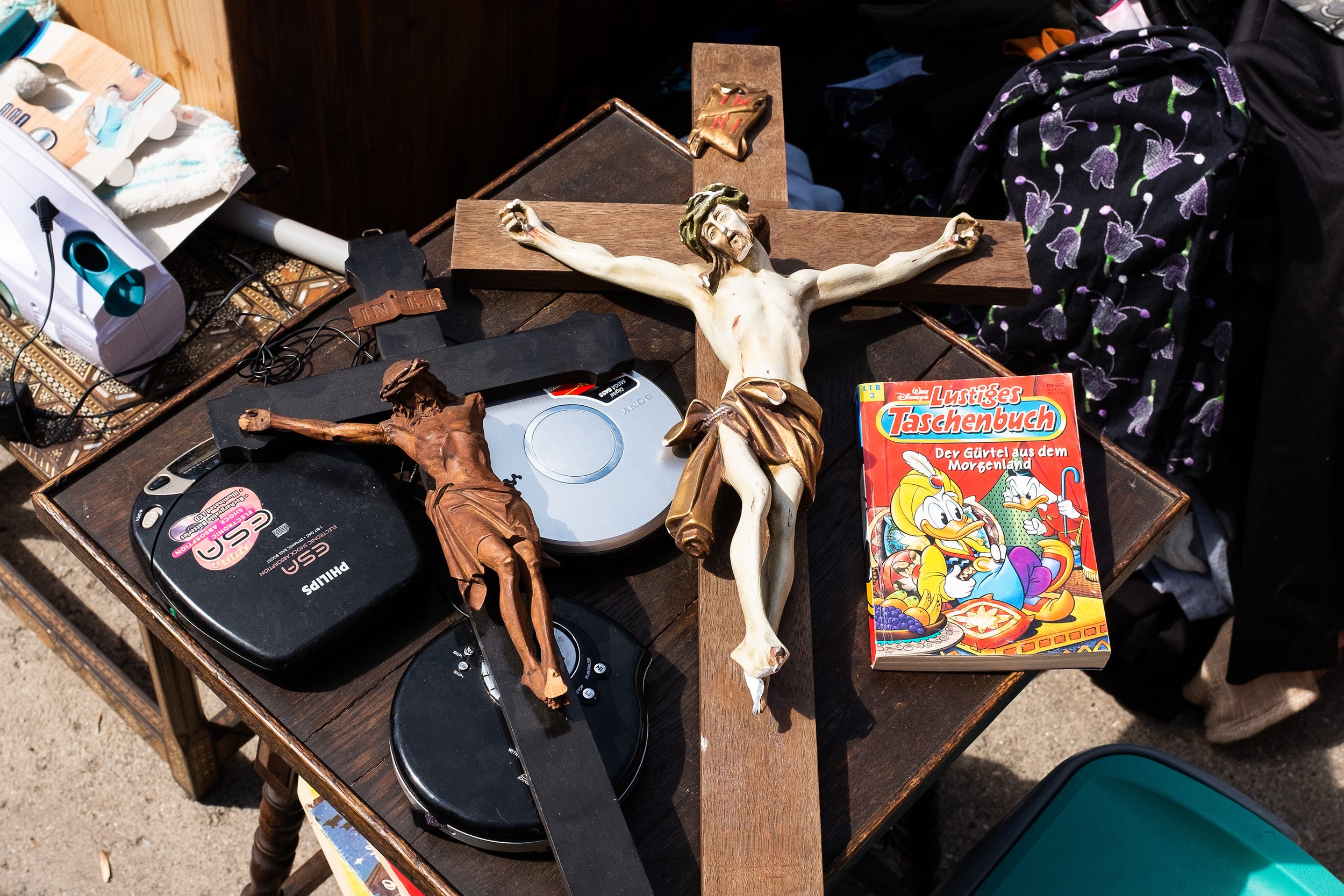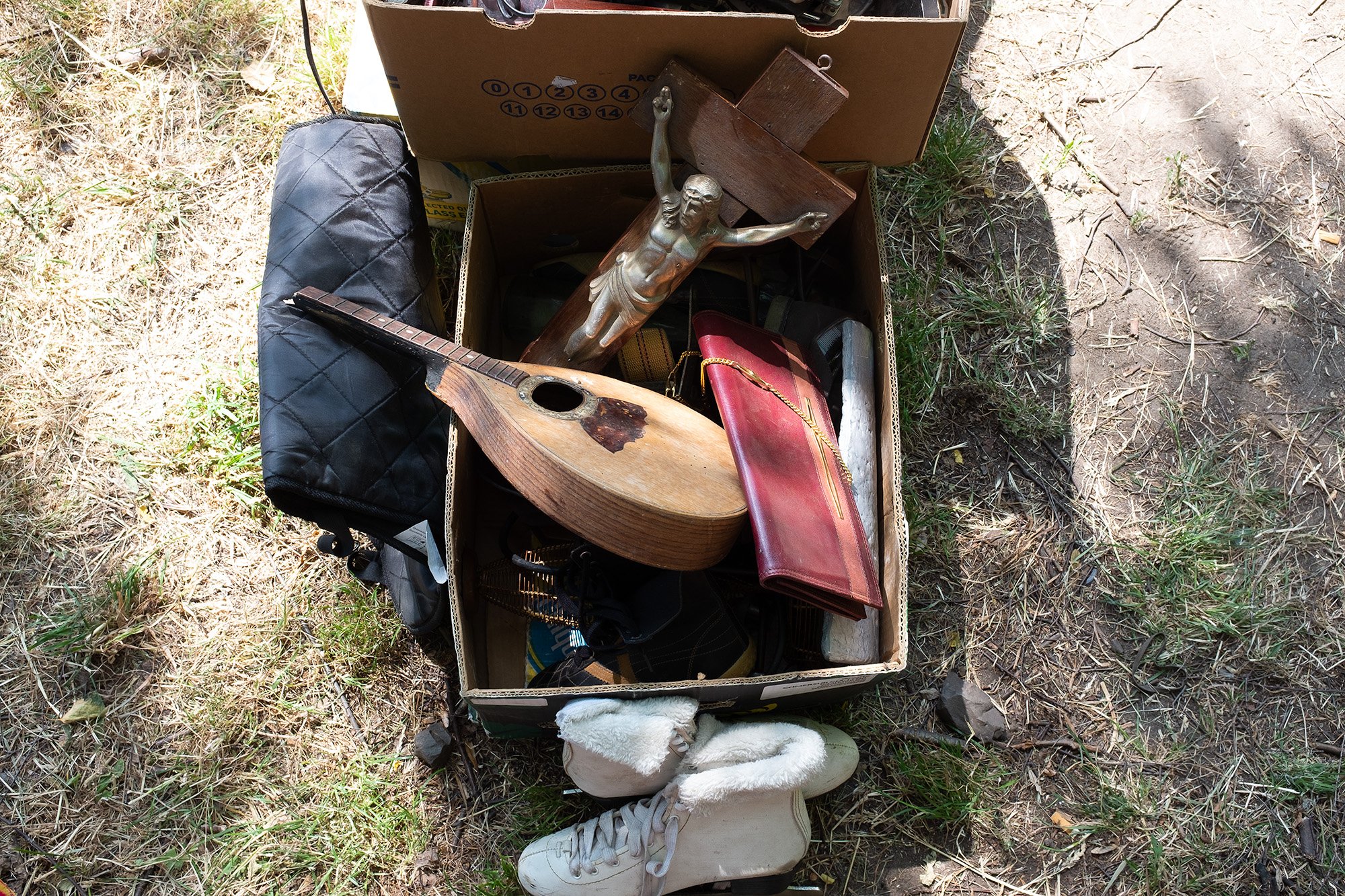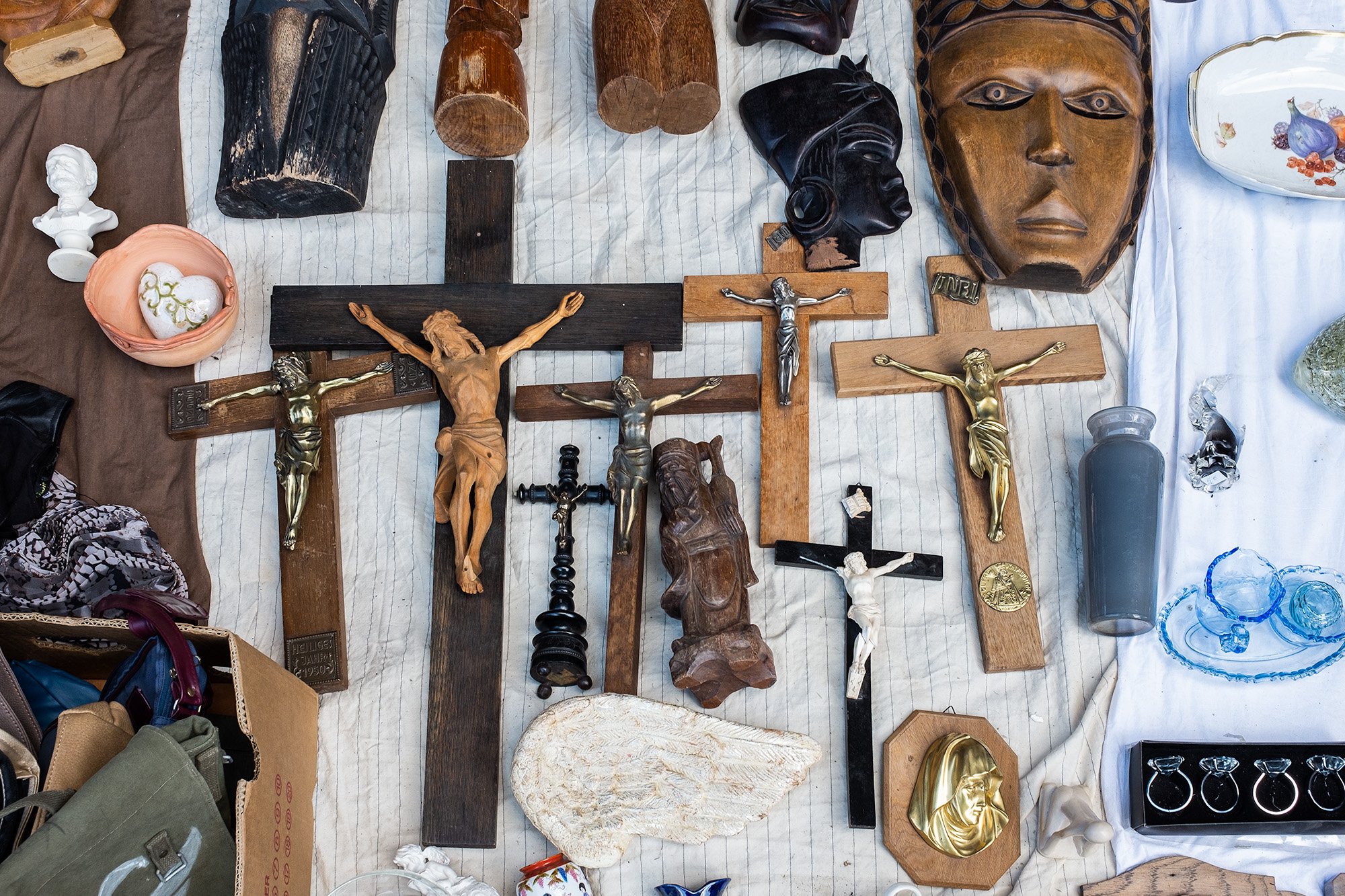PUNCTUM
Installation, 2023
1. “Punctum”: photography, wood, iron nails; video (dur. 1 min)
2. “Bog”: video loop
3. “Market”: photography
4. “Copyright”: paper, lipstick
“Punctum” has developed from a polyphony of cross cultural and interdisciplinary references: fairytales by H.C Andersen, “A Clockwork Orange” novel by Anthony Burgess, later adopted by Stanley Kubrick, reflections on photography by Roland Barthes, “Do it yourself” relief by Eugeniusz Get-Stankiewicz, “The Society of the Spectacle” theory by Guy Debord, urban mythology, symbolic differences of Eastern and Western cultures.
Anthony Burgess in his dystopian novel “A Clockwork Orange” describes the Ludovico Technique - a form of aversion therapy, in which a patient is exposed to violent scenes without being able to close his eyes. One side of “Punctum” object is a nail-pierced eye, metaphorically expressing a reflection over the amount of violent images, visualising all the death, sufferings and persecutions that are not only happening as a result of ongoing war conflicts, but also being publicly exposed and viewed on-line on a daily base. This, alongside with fake news and image manipulation, questions our eye as an ultimate judge in distinguishing the true from the false; the language of photography and the media as an accepted life-style. Reverse side of “Punctum” represents a Sadhu board. Being rooted in the old Indian tradition these boards were meant for spiritual practice of standing on nails in order to balance body and mind and develop mental strength through patience and overcoming fear and pain.
In June 2023 during my residency in Wroclaw I was walking around the local Sunday marketplace and I found myself being surrounded by “still lifes” with crucifixions. In Christian world Jesus Christ is known as an ultimate symbol of the Truth. Multiplied and reproduced crucifixion being publicly exposed for sale, taking a grotesque and kitsch form, represents for me the new reality we live in, where reproduction and distortion of the information is a common practice in the media which has become our main field for information, presentation, trade and trial. At the same time those “still lifes” from the market reminded me of the home where I grew up. In their attempt to decorate balconies my parents, as many in Belarus, have built up an “art collection” were crucifixions or icons would be neighbours to decorative knifes, toys, reproductions of paintings, ceramics, vases, small statuets and other souvenirs.
The idea of “Bog” video loop came in time of the protests 2020 in Belarus as a strive to comprehend the situation in my home country. Bog (балота blr., bagno pl.) is one of the symbols of Belarus. Bog-state is both an element of Belarusian mentality, that is passive and all acceptive, as well as bog is the State - monstrous Leviathan, that swallows all its victims. This duality creates an endless loop like a nightmare that is impossible to exit. Bog has an interlingual world play as “Bog” (Бог, Bóg) is God (in belarusian, russian and polish languages).
In my work the research on group identity stays in a tight connection with reflection over the language of photography as one of the main tools of its construction, that is influencing both society and art.
“Copyright” is a paradoxical statement. It is a fingerprint of my camera button pushing finger - the last confirmation of the ownership and presence of a photographer; as well as it is a gallery red dot - the symbol of a sold art work. It is also a bleeding wound - stigma. On the one hand it suggests a discussion on reproduction in art and photography in particular, the value of a picture, which can be reproduced by anyone any moment as long as the image has been presented. On the other hand It is also a finger print of a photographer as a criminal with the blood on his/her hands, as photography is one of the main contributors to formation of collective identity with its mythology and ideology, according to which the different other, who stands out and does not fit in the system, will be burned at the stake or crucified.
In “The Society of the Spectacle” Guy Debord is quoting Feuerbach:
But certainly for the present age, which prefers the sign to the thing signified, the copy to the original, representation to the reality, the appearance to the essence… illusion only is sacred, truth profane. Nay, sacredness is held to be enhanced in proportion as truth decreases and illusion increases, so that the highest degree of illusion comes to be the highest degree of sacredness.
Etymologically “punctum” is a “point", a “dot”, a “spot”, a “small mark” or any other “small distinct area” as well as it is a “moment” / “instant” (“punctum temporis” Latin) and a “full-stop” or “period” (Latin).
“Pūnctum” (Latin) comes from “pungere”, meaning “to prick” or “to pierce”, as a noun it signifies a small hole / puncture made by pricking (a pinprick).
Roland Barthes in “Camera Lucida” uses “punctum” as a term in a sense of puncturing or injecting, that refers to a personally poignant detail on a photograph which pierces, wounds or pricks a viewer.
In anatomy “punctum” is a “sharp point” / a “tip” as well as it is a tiny drenaging point inside a human eye, which function is to collectors our tears.

